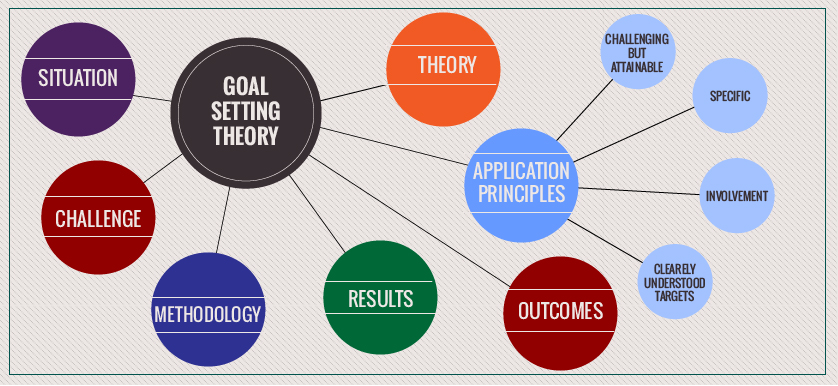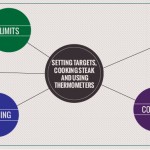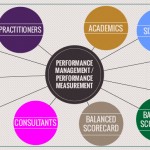Applying Goal Setting Theory in practice: An action research exercise
smartKPIs.com Performance Architect update 8/2010
In my previous updates I highlighted the importance of theory in performance management and introduced the goal setting theory as one of the most important informing the discipline. I also outlined the importance of understanding the complexities of setting targets.
At smartKPIs.com, we not only enjoy thinking and talking about performance management, but we also apply performance management concepts in our own work.
Today’s update illustrates how goal setting theory was used in practice by the smartKPIs.com team through an action research exercise.
Situation: At the beginning of November 2009, the database of performance measures on www.smartKPIs.com had 600 published KPI examples. The growth rate of the database was constant in November and December, however limited and not optimized..
Challenge: To make the website content more relevant to the diverse profile of visitors, we needed to accelerate the rate at which new KPI examples were published.
Methodology: apply the Look, Think and Act routine of Action Research (Stringer, 2007)
- Look – we gathered relevant information and developed a rich picture of the various functional areas and industries part of the smartKPIs.com taxonomy.
- Think – we analyzed the documentation process and clarified the issues to be addressed
- Act – we established a plan, implemented it and evaluated results
Theory: use Goals Setting Theory principles (Locke & Latham, 1990)
Application of Goal Setting Theory principles:
- Challenging but attainable. We established an overall target for the entire documentation team: Double the number of published KPIs in one month. From 1000 at the end of December 2009 to 2000 published KPI examples by the end of January 2010.
- Specific rather than vague. We were aware that such a challenging target might lead to a decrease in the quality of the content. This risk was addressed by clarifying that the target had to be achieved while respecting the high quality standards characterizing the KPI examples documented on http://www.smartKPIs.com. This was reinforced by the establishment of work package with clear quality and quantity specifications.
- Involvement of team members in the process of setting their own targets. We decided to split this target by working days and established the daily target number of KPIs for the team. This was divided by team member, taking into account the proportion of working hours allocated to this task each day. These targets were discussed and some of the team members adjusted them upwards, based on the level of difficulty of their allocated work package.
- Ensure targets are measurable in terms of being clearly understood by employees: quantity, quality, time and cost. A spreadsheet was established to clarify daily targets and keep track of the progress. Weekly meetings were used to discuss progress, share learnings and adjust work packages.
Results:
- January 2010 – The target was met on the last day of the month: 1000 KPI examples were published in a 4 weeks period, as planned.
- February 2010 – The target was met one week before the deadline, confirming that the previous month result was due to an improved process, easily replicated from one period to another.
Outcomes: Performance management is more than just ensuring outputs are delivered as planned. It is also about using such outputs to deliver outcomes that generate added value. Here is how the output of 2000 KPIs published as planned during the last two months is generating value for smartKPIs.com:
- The traffic to http://www.smartKPIs.com increased considerably. In February 2010, smartKPIs.com established a new site record in terms of daily visitors.
- The traffic to the website remained constant even after stopping the advertising campaign we rolled out last year. After a brief decrease, the volume of visitors started to gain momentum. While other factors contributed to this, certainly the quality content published over the last two months, had its share in attracting new visitors. Thus the financial value generated by the added content can be estimated as the equivalent of a large share of our advertising budget for two months.
- The continuous improvement of the quality and quantity of the content consolidated the recognition smartKPIs.com has started to have the international performance management community as a global platform for performance management knowledge integration.
- Internally, the learning experience team members shared during this exercise contributed to the generation of new ideas and innovation, such as the launch of the Performance Management IQ test.
- The experience itself and the achievement of targets confirmed the talent, dedication and work ethic of the smartKPIs.com team. It gave a sense of pride and satisfaction of getting the job done. Having the opportunity to plan, deliver and excel is in itself a powerful motivator and enabler of self efficacy. It is a story worth telling others: “…In December 2009, while working with the smartKPIs.com team on growing the website, we were faced with this challenge…We were a great team…And we did exceptional things…”
After all, as Albert Einstein said: “The value of achievement lies in the achieving.”
Notes:
- No bonuses were paid for achieving the targets set as part of this exercise.
- No paper was printed as part of the measure documentation process.
Stay smart! Enjoy smartKPIs.com!
Aurel Brudan Performance Architect, www.smartKPIs.com
References
- Locke, E. A., & Latham, G. P. (1990). A theory of goal setting and task performance. Englewood Cliffs, NJ: Prentice Hall.
- Stringer, E. T. (2007) “Action Research, 3rd Edition“, Thousand Oaks, CA, Sage Publications.

Tags: Aurel Brudan, Management performance, Performance Architect Update






